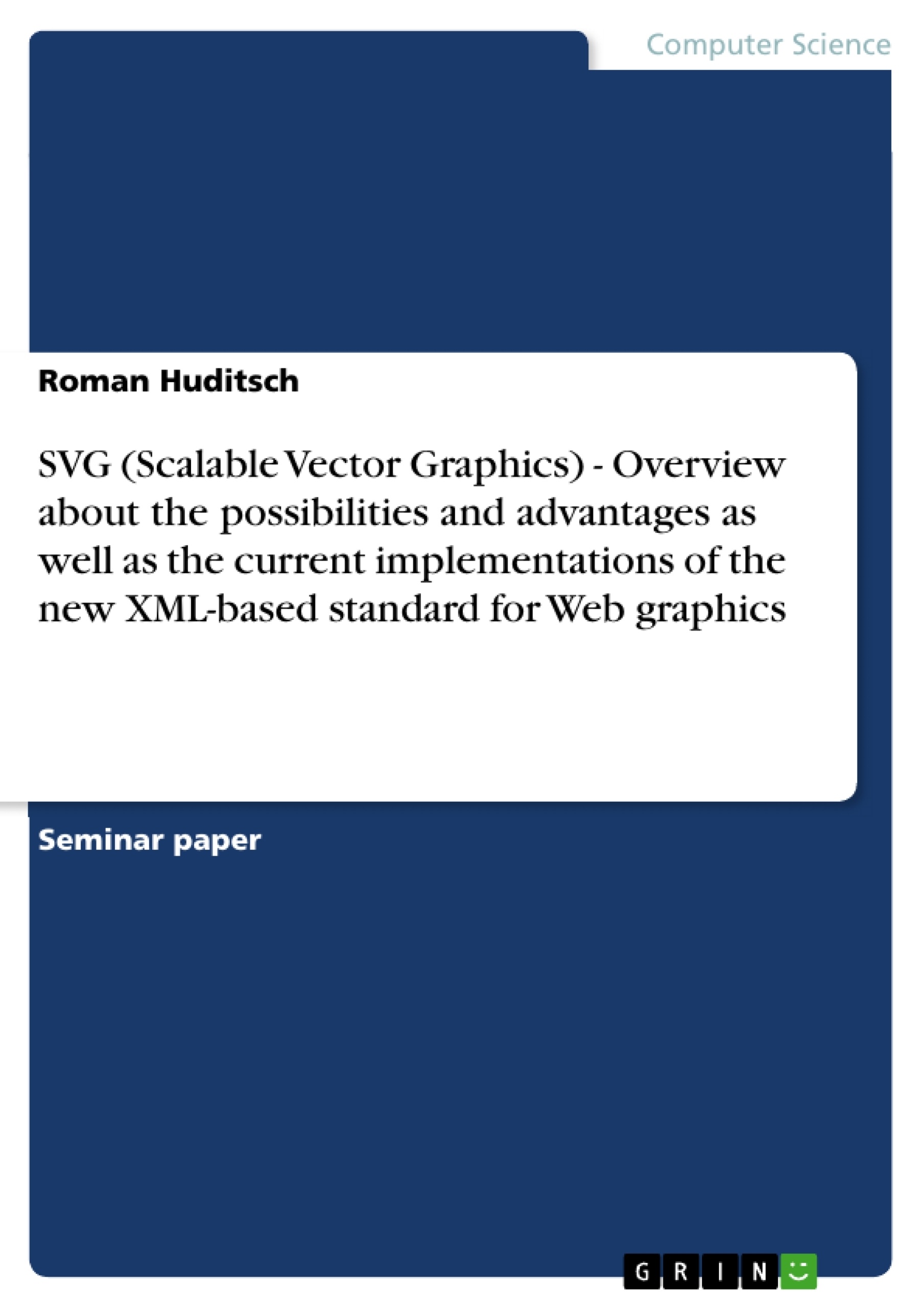This seminar paper was written in the summer semester 2002 during an English course, which was taught by Veronica Dal- Bianco B.Sc. RSA Dip. at the Fachhochschulstudiengang Informationsberufe in Eisenstadt, Austria.
It is my intention to provide the interested reader with a complete and detailed overview of the new Web standard for vector graphics, SVG, which is the acronym for “Scalable Vector Graphics”. In the present paper important milestones in the long lasting development process of SVG are mentioned, as well as it states the numerous advantages that result from the useage of this new XML- based standard. Furthermore, an insight into the current status and availability of the most popular and interesting SVG implementations should be delivered.
I might make use of some termini technici which are widely common in the XML and markup community, but may be unknown to readers new to this topic. Such terms can be found in a glossary contained in the appendix.
Inhaltsverzeichnis (Table of Contents)
- 1 Introduction
- 1.1 Current Status of SVG
- 1.2 Primary Concepts
- 1.3 SVG's Benefits
- 2 Implementations
- 2.1 Displaying SVG
- 2.2 Tools for Creating SVG
- 3 Conclusion
- 4 References
- 5 Appendix
- 5.1 Glossary
Zielsetzung und Themenschwerpunkte (Objectives and Key Themes)
This seminar paper aims to provide a detailed overview of the Scalable Vector Graphics (SVG) standard for web graphics. It examines the historical development of SVG, highlighting its key advantages and exploring current implementations. The paper also discusses tools for creating and displaying SVG content.
- SVG as a new standard for web graphics
- The advantages and benefits of using SVG
- Key milestones in the development of SVG
- Current implementations and tools for SVG
- The role of XML in SVG technology
Zusammenfassung der Kapitel (Chapter Summaries)
The introduction provides an overview of the current status of SVG and explores its primary concepts and benefits. It discusses the advantages of using SVG for web graphics, such as its scalability, vector-based nature, and ability to be integrated with other web technologies.
The chapter on implementations focuses on the various ways SVG can be displayed and created. It discusses different software solutions for viewing SVG files and explores popular tools for authoring SVG content.
Schlüsselwörter (Keywords)
The primary keywords associated with this paper are: Scalable Vector Graphics (SVG), XML, Web Graphics, Vector Graphics, Web Standards, Implementations, Tools, Displaying SVG, Creating SVG. The paper emphasizes the importance of SVG as a new and promising standard for web graphics, exploring its advantages, technical features, and current applications.
- Quote paper
- Roman Huditsch (Author), 2002, SVG (Scalable Vector Graphics) - Overview about the possibilities and advantages as well as the current implementations of the new XML-based standard for Web graphics, Munich, GRIN Verlag, https://www.grin.com/document/195495



